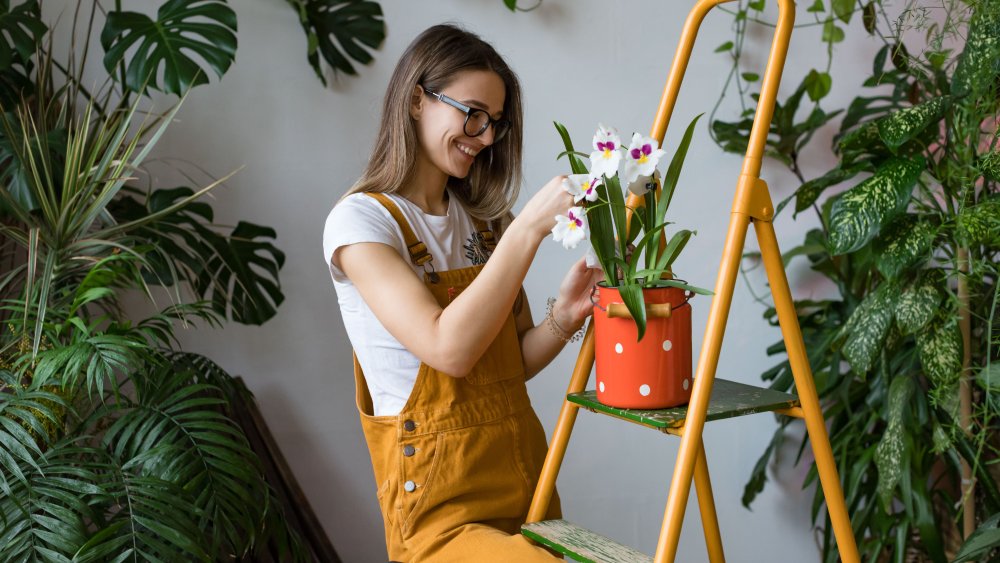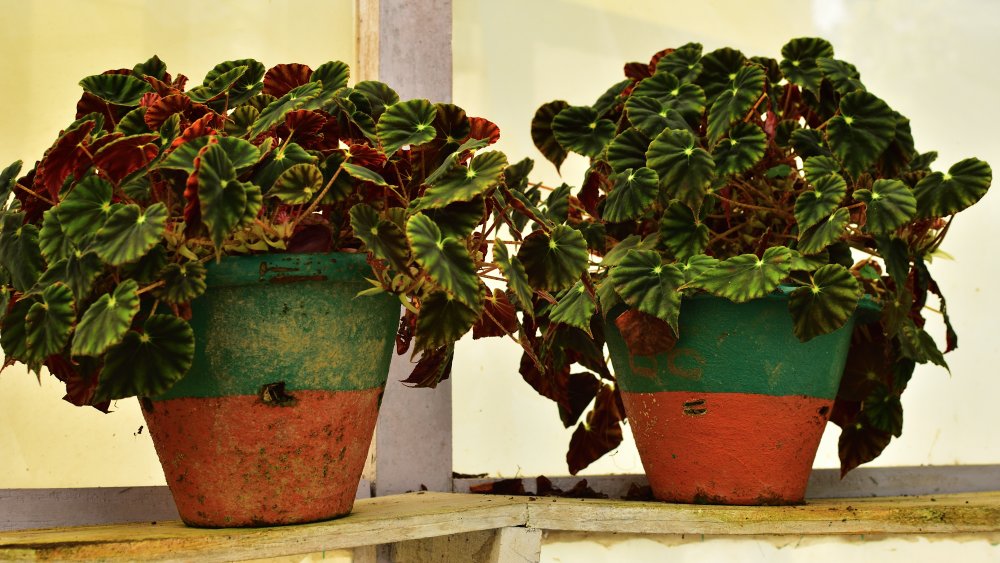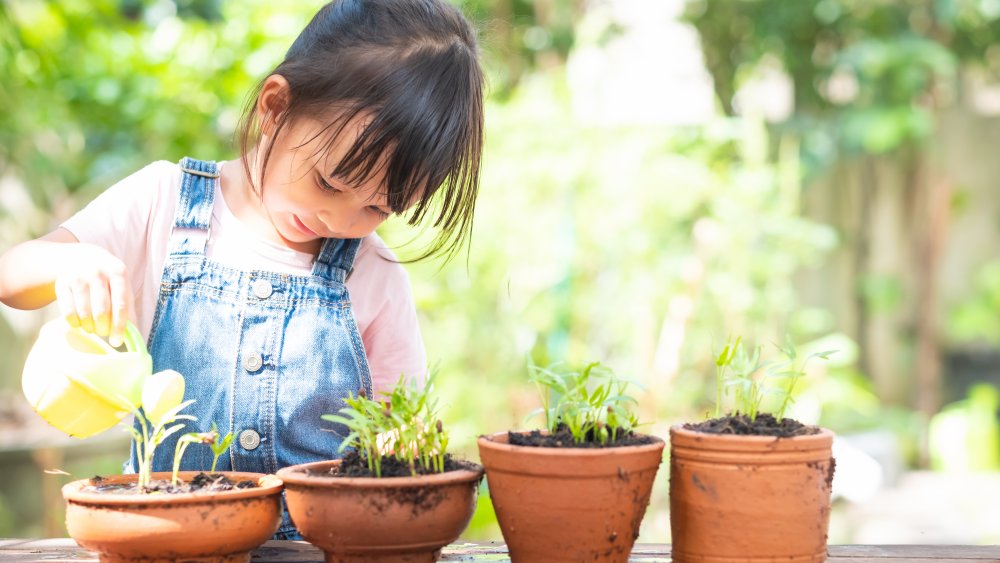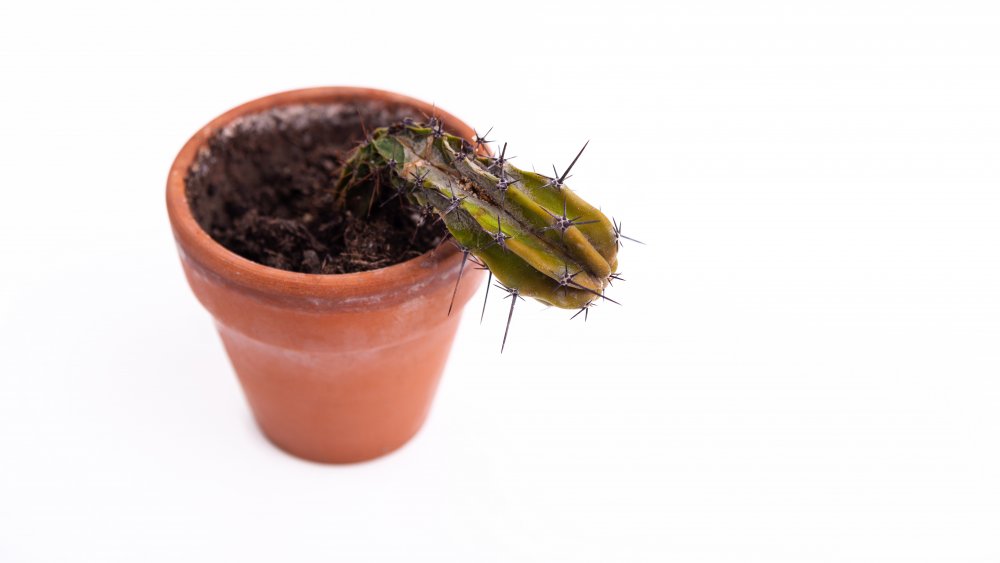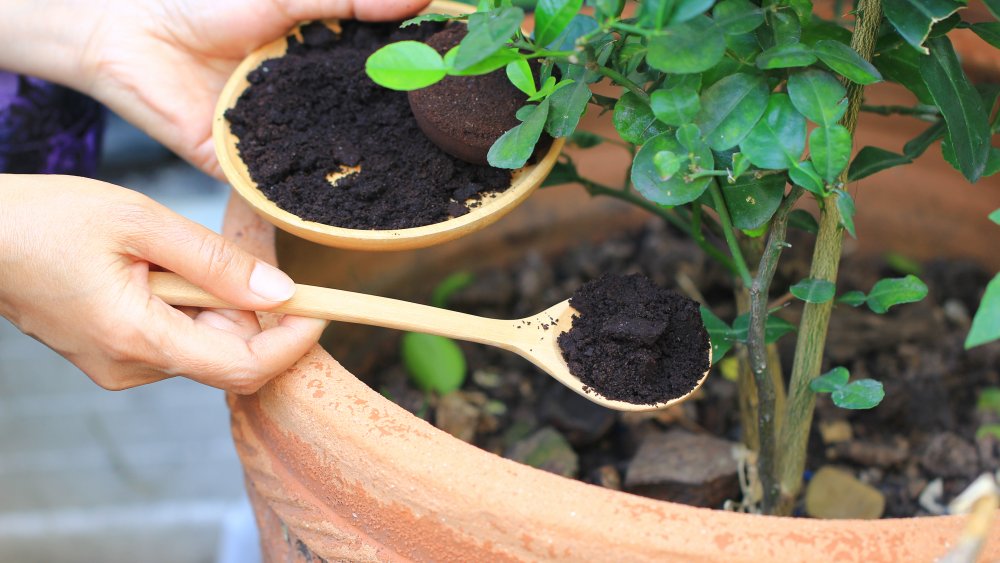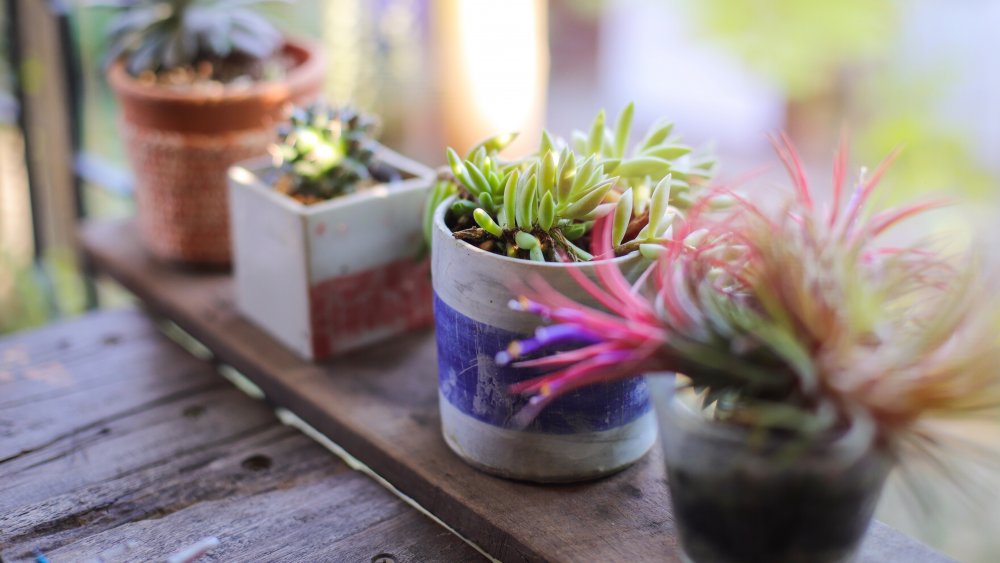The Biggest Mistakes You're Making With Your Indoor Plants
Gardening, they say, is a great way to relax as well as to beautify your environment. It's not all that relaxing (and somewhat less than beautiful), though, if you don't know how to take care of your plants, and you find yourself surrounded by brown, withered stalks that just scream "failure!"
While you may feel that you're just cursed with a brown thumb and that every plant you take into your home is doomed to die, it doesn't have to be this way. Nor are you necessarily stuck with artificial plants and silk flowers. If you take a little time to educate yourself about proper houseplant care, there's a good chance that you may find a plant or two that may be able to survive on your watch. Sure, it may seem a bit complicated at first — so many ways for everything to go wrong! — but it's not really as hard as all that. As Our House Plants suggests, simply treat plant maintenance as another routine household chore. Once you get the hang of it, proper plant care will become second nature, and you'll be able to enjoy a little natural beauty indoors.
Not knowing what kind of plant it is
This might sound kind of silly, but if you buy a plant on impulse in, say, the grocery store or hardware store or anywhere other than a nursery (brick-and-mortar or online), there's a chance it may not be labeled, or at least not labeled as specifically as it would be in a place where they know their plants. For example, if you buy a pot with a pretty flower and the tag says it's a begonia, that's all well and good, but did you know there are more than 1,000 different varieties of begonias? That's what the Garden Lovers Club says. The point is, if you don't know whether you've got a wax begonia or a dragon wing, you won't know the proper way to care for your poor Unidentified Flowering Object.
House Beautiful compares trying to care for a plant that is only vaguely labeled and is lacking in basic care instructions to trying to bake a cake without a recipe. While there are undoubtedly some very experienced cooks that can do the latter, and probably some gifted gardeners that might be able to intuit the former, beginners are advised to go in with all the necessary info.
Overwatering your plant
The leading cause of death amongst houseplants, according to The Spruce, is drowning. Plants, after all, can't swim, and neither can they breathe if they get waterlogged. Too much water can lead to root rot, and letting your plants sit in water is basically signing their death warrant. Garden DIY & Ideas says you should refrain from watering your plants until the top inch of soil is dry, or if you want to do things the quick and easy way, try using a self-waterer. (You can even make your own waterer using a wine bottle.)
Oh, and when you do water, they also suggest using water that you've let sit for 24 hours. That way, all of the salt and chlorine that tap water contains will settle to the bottom. Just let the last 2 inches stay in the watering can, and the water on top will be almost as good as using bottled water for your plants (which you can also do if you want to splurge on your little green friends).
Letting your plant get too dry
While overwatering is more common than under-watering, there are also those who neglect their poor plants to death. Our Houseplants notes it's not just obliviousness that can result in dried-out greenery (more like brownery). It could happen if you go on vacation and don't have a reliable plant-sitter, or if the heat or humidity levels change inside your home and you don't adjust your watering schedule accordingly. They suggest the best fix for this is to learn as much as you can about how much water your plants need and when they need it, but failing this, you can always select drought-tolerant houseplants such as succulents or cacti.
Thinking all your plants need is water
While water is, of course, crucial to the life of a plant (or a person), it's not the only thing your houseplants are going to need. Indoor, as well as outdoor plants, need to be fertilized, or else they will weaken and fail to thrive. Garden DIY & Ideas warns that over-fertilizing can be a problem, though, since indoor plants tend to need a lot less fertilizer than their open-air counterparts. You can tell you're using too much fertilizer if your plant's leaves turn brown at the tips or their lower leaves turn yellow and wilt or even drop off. Should you see any of these problems, you'll need to rinse the excess fertilizer and the salt it contains out of the potting soil with fresh water.
Taking your indoor plants outdoors
Realtor.com cautions against one houseplant mistake that commonly occurs in the spring. Over-anxious plant parents feel that their little green buddies could use some real sunshine after a long winter spent indoors, but plants aren't like dogs in this respect, they're more like tropical fish. You wouldn't take your fish out for a walk, or even put its tank out in the yard on a sunny afternoon, and you really shouldn't do this with your indoor plants, either.
As Will Creed, gardening expert with Horticultural Help, tells it, since indoor plants haven't been properly acclimated to such a drastic change in light and temperature, "typically, what happens is the plants burn up." Well, they don't actually burst into flames, but they are likely to come down with a bad case of "leaf scorch," which is the vegetation version of a sunburn (only one that involves their leaves turning brown instead of lobster red). He advises leaving plants inside if they're doing well there, but says if you're wanting to transition them to outdoor living, it's best to do so gradually and only when the temperatures aren't likely to drop below 55 degrees.
